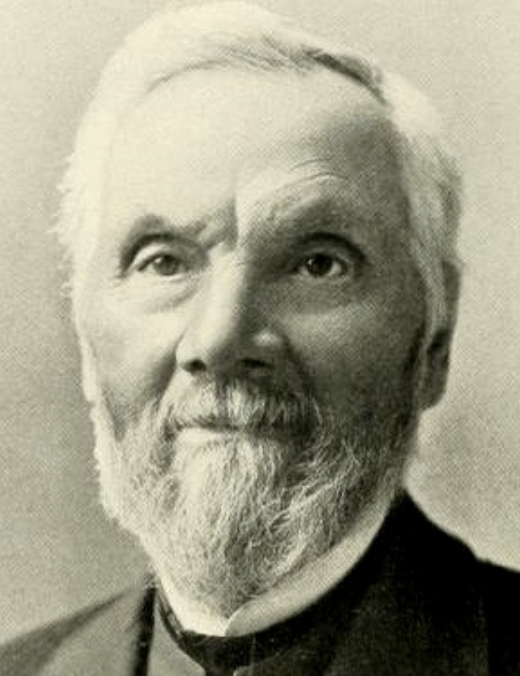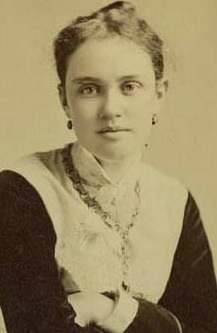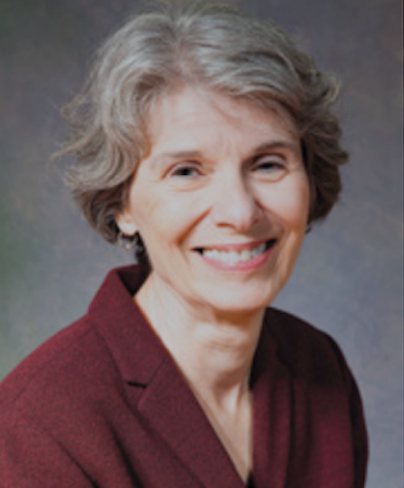September 22
Parker Pillsbury

On this date in 1809, Parker Pillsbury, the freethinker, abolitionist and reformer, was born in Massachusetts. He became a licensed minister in the Congregationalist Church in 1839 after studying at Gilmanton and Andover theological seminaries. After preaching briefly, Pillsbury left the ministry over Congregationalist and other Christian complicity with slavery. He edited The Herald of Freedom (Concord, N.H.) in the 1840s and The National Antislavery Standard in New York City in 1866.
From 1843 until 1863, Pillsbury worked as an abolitionist agent and lecturer, rubbing shoulders with most of the notable reformers of his day. Pillsbury became sympathetic to the cause of women, who had to fight to be permitted to work on equal footing with male abolitionists. After the Civil War he collaborated with Elizabeth Cady Stanton as co-editor of the newspaper The Revolution, published by Susan B. Anthony. His writings include Acts of the Anti-Slavery Apostles (1883) and the critical Church As It Is: The Forlorn Hope of Slavery (1847).
Feminist Pauline Wright Davis lauded Pillsbury for his “good deeds and unselfish work. … His pen, wherever found, has always been sharpened against wrong and injustice.” (History, 1870.) He lectured widely on the “Free Religion” circuit in Ohio and Michigan and was vice president of the New Hampshire Woman Suffrage Association. He died at age 89 in 1899.
"The Methodist Discipline provides for ‘separate Colored Conferences.’ The Episcopal church shuts out some of its own most worthy ministers from clerical recognition, on account of their color. Nearly all denominations of religionists have either a written or unwritten law to the same effect. In Boston, even, there are Evangelical churches whose pews are positively forbidden by corporate mandate from being sold to any but ‘respectable white persons.’ Our incorporated cemeteries are often, if not always, deeded in the same manner. Even our humblest village grave yards generally have either a ‘negro corner,’ or refuse colored corpses altogether; and did our power extend to heaven or hell, we should have complexional salvation and colored damnation."— Pillsbury letter, The North Star, Dec. 5, 1850
Eva Ingersoll

On this date in 1864, Eva Ingersoll (later Ingersoll-Brown) was the first of two daughters born to freethought great Robert G. Ingersoll and Eva Wakefield Ingersoll. Both Eva and her sister Maud shared the same middle name: Robert. The girls were gently tutored, and when the family moved to Washington, D.C., from Illinois, they received lessons in music, art, German, French and Italian, piano and singing. Ingersoll was a pleasing soprano and, like her father, enjoyed public performance and toyed with a concert career.
As a young woman she was described in a sexist manner by the St. Louis Globe-Democrat as “a most decided beauty, being of that fresh, dewy-eyed and virginal type that the English painters depict.” (March 31, 1881.) In 1889 she married Walston Hill Brown, a well-to-do builder of railroads and an agnostic like her. His wedding gift: a spacious estate known as Castle Walston on the Hudson River at Dobbs Ferry, New York. It was a measure of the family devotion that before the marriage, all parties arranged that the newlyweds would live with the Ingersolls six months and the Ingersolls would live with the Browns for six months.
Ingersoll, a feminist and suffragist, became a prominent humanitarian in New York, working with the Advisory Board of the New York Peace Society, the Women’s Trade Union League, the National Child Labor Committee, the New York Society for the Prevention of Cruelty to Animals and the Society for the Advancement of the Colored People. She was president of the Child Welfare League. (D. 1928)
In 1911 Eva Ingersoll described the future woman who “will belong to no church, … will be fettered by no senseless formula or puerile dogma.”— "Rational Mothers and Infidel Gentlemen: Gender and American Atheism, 1865–1915" by Evelyn A. Kirkley (2000)
Linda LaScola

On this date in 1945, Linda LaScola — qualitative researcher, clinical social worker and Clergy Project co-founder — was born to Elvira (née Favorite) and Philip LaScola in New Castle, Pa. Her mother was a housewife and clerk typist. Her father was a wholesale produce merchant. The youngest of three children, she had a stable and very happy childhood.
“Although we went to church every Sunday, we weren’t very religious,” LaScola said. “My mother refused to send us to Catholic schools. She didn’t go to church much herself, claiming ‘claustrophobia,’ and my father guiltlessly skipped [mandatory Mass on] holy days.” (In-sight Journal, Dec. 5, 2016)
She attended church less at Penn State University, where she earned a B.S. in secondary education in 1967. “Though I still believed in God, there was too much silliness in Catholicism for me to take the religion seriously. After about 20 years of marriage and without children, my husband, an agnostic, and I started attending an Episcopal Church, to fill his need for community.” (Ibid.)
Her employment included recreation and case work for the American Red Cross and five years as a U.S. Capitol tour guide during which she went back to school and earned a master’s degree in social work in 1979 from the Catholic University of America in Washington, D.C. She had married Arthur Siebens that same year after they’d met at a neighborhood public library.
Alcohol abuse and issues affecting work performance took up much of her time as a social worker. A natural outgrowth of that was her subequent career in qualitative research, which is commonly used in the humanities and social sciences to gather in-depth insights into an issue or to generate new ideas for research.
In a speech to FFRF’s national convention in 2016, LaScola detailed her project with nonbelieving clergy:
When I made my personal academic study of religion in 2005-2006, I learned that clergy learn about the mythological basis for the bible in seminary. As a qualitative researcher and former clinical social worker, I couldn’t figure out how they could then go out and teach and preach something they knew wasn’t true. How could they deal with the cognitive dissonance? I learned that philosopher Daniel Dennett had the same question. So, to make a long story very short, we teamed up with Tufts University to conduct a small pilot study, and then a larger study of 35, including current and former pastors, seminary students and professors.
Their 2010 paper in Evolutionary Psychology on the pilot study was titled “Preachers Who Are Not Believers” and was expanded in 2013 for their book “Caught in the Pulpit: Leaving Belief Behind.”
In 2011, LaScola became a co-founder of The Clergy Project, along with Dennett, FFRF’s Dan Barker, Richard Dawkins, a pastor called “Chris” and another named “Adam,” the latter who came out publicly in 2016 as Carter Warden. It launched with 52 charter members in a collaborative effort to provide online space where deconverted clergy could gather to support and encourage one another.
“The Unbelieving,” a 90-minute, off-Broadway play that was years in the making and was produced by LaScola and Dennett with staging by The Civilians theater company was scheduled for a 2022 run from Oct. 20 through Nov. 20 at 59E59 Theaters. The playwright is Marin Gazzaniga. Based on interviews conducted for “Caught in the Pulpit,” the play is described as a “classic tale of religious conversion, [in which] finding God holds the promise of a life filled with purpose and meaning. But what happens when this transformation occurs in reverse, and a faith you have built your life around begins to fall away?”
LaScola also blogged extensively at Rational Doubt on Patheos. As of this writing in 2022, she and her husband live in Washington, D.C., and The Clergy Project has over 1,000 members.
“After about a year of reading and taking adult education classes at church, I realized there was nothing to believe and we left. My husband, who, like me, now identifies as an atheist, has since joined an Ethical Society and a Unitarian Church. I stay home and read the paper.”
— Interview, In-sight Journal (Dec. 5, 2016)
Bobby Hinds

On this date in 1931, fitness entrepreneur Bobby Hinds was born in Kenosha, Wis. He had an impoverished upbringing, with an alcoholic father and a mother with polio. At age 10 he was sent to reform school for his part in several robberies and burglaries in the company of older boys.
“I was quite religious being brought up. My parents were Pentecostal, a Four Square gospel kind of thing,” Hinds said in a March 2014 interview on FFRF’s Freethought Radio. He chose Catholicism in reform school, where “the priest had a tremendous power over me.” He told about sexual abuse before his arrest, by foster parents after being released and then by his parole officer, a Moravian minister.
As a high school senior, he lived at his best friend Alan Ameche’s house. Ameche went on to win football’s Heisman Trophy and have an NFL career. Hinds, who had boxed Golden Gloves in Kenosha, sparred and starred at the University of Wisconsin-Madison as a varsity boxer, graduating with majors in criminology and art.
He taught art at Madison East High School and moonlighted as a professional boxer before a broken wrist ended his boxing. Before long, the extroverted Hinds, a natural salesman, embarked on the venture that made him a millionaire. At age 46 he “made a little discovery that if you string 65 big plastic beads on a piece of nylon cord, what you’ve got is a superior jump rope.” (Wisconsin State Journal, March 18, 2023)
After he talked his way on to the national TV show “To Tell the Truth” hosted by Garry Moore (“Will the real Bobby Hinds please stand up?”) and demonstrated the rope, J.C. Penney bought 85,000 Bobby Hinds’ Lifelines. He appeared on talk shows hosted by Johnny Carson (twice), Merv Griffin and Mike Douglas. Time magazine dubbed him “The Jump Rope King.” His company, LifelineUSA, was a leader in the 1970s fitness movement that was an early adopter of resistance training, a way to exercise without weights.
Hinds sold Lifeline to a Chicago-based company in 2014. A few months later, at age 82, he was inducted into the National Fitness Hall of Fame. His office walls were lined with dozens of photos of celebrities, from entertainment, sports and politics, who used his products and became his friends.
Asked once to name a person in history he admired, Hinds said, “Clarence Darrow because of his passion for truth.” His said his religious doubts started when he was about 13 when he started reading biographies about Darrow, Voltaire, Schopenhauer and Gore Vidal. He joined FFRF in 1984. (For an interesting feature with photos of Hinds and celebrities, scroll to page 8 in the April 2014 issue of Freethought Today.)
He married his wife Joy in 1955 and they had four children raised in a freethinking atmosphere: Jil, Jef, Juli and Jonny. He died of heart failure at age 91 and donated his body to the UW School of Medicine. (D. 2023)
“Being kind with an open mind is my religion.”
— Hinds' "Out of the Closet" statement featured in FFRF's 2010 bus ad and billboard campaign
